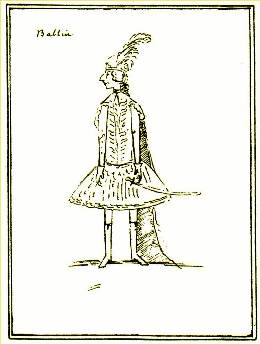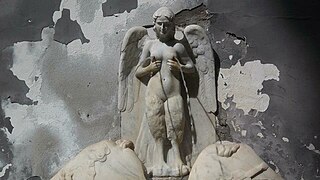Manuel de Zumaya or Manuel de Sumaya was perhaps the most famous Mexican composer of the colonial period in New Spain. His music represented the pinnacle of the Baroque in the New World. He holds the distinction of being the first person in the Western Hemisphere to compose an Italian-texted opera, entitled Partenope. Similar to Antonio Vivaldi, Zumaya was also a lifelong, active Roman Catholic priest.

Il pastor fido is an opera seria in three acts by George Frideric Handel. It was set to a libretto by Giacomo Rossi based on the famed and widely familiar pastoral poem of the 'Il pastor fido' by Giovanni Battista Guarini. It had its first performance on 22 November 1712 at the Queen's Theatre in the Haymarket, London.

Imeneo is an opera seria in three acts by George Frideric Handel. The Italian-language libretto was adapted from Silvio Stampiglia's Imeneo. Handel had begun composition in September 1738, but did not complete the score until 1740. The opera received its first performance at the Lincoln's Inn Fields in London on 22 November 1740, and received another performance on 13 December. Handel then revised the score, and this revised version received concert performances in Dublin, on 24 and 31 March 1742.

Anna Maria Strada, also known as Anna Maria Strada del Pò, was an Italian soprano. She is best remembered for her association with the composer George Frideric Handel, in whose operas Strada sang.

Partenope is an opera by George Frideric Handel, first performed at the King's Theatre in London on 24 February 1730. Although following the structure and forms of opera seria, the work is humorous in character and light-textured in music, with a plot involving romantic complications and gender confusion. A success with audiences at the time of its original production and then unperformed for many years, Partenope is now often seen on the world's opera stages.
Domenico Fischietti (1725–1810) was an Italian composer.

La púrpura de la rosa is an opera in one act, composed by Tomás de Torrejón y Velasco to a Spanish libretto by Pedro Calderón de la Barca, a great writer of the Spanish Golden Age.

Catone in Utica is an opera libretto by Metastasio, that was originally written for Leonardo Vinci's 1727 opera. Following Vinci's success, Metastasio's text was used by numerous composers of the baroque and classical eras for their own operas, including Pietro Torri (1736), Antonio Vivaldi (1737), Giovanni Battista Ferrandini (1753) and J. C. Bach (1761).
Francesca Bertolli was an Italian contralto of the 18th century. She is best remembered for her association with the composer George Frideric Handel, in whose operas she sang.

Annibale Pio Fabri, also known as Balino, from Annibalino, diminutive of his first name, was an Italian singer and composer of the 18th century. One of the leading tenors of his age in a time dominated by the castrati, Fabri is now best known for his association with the composer George Frideric Handel, in whose operas Fabri sang.
The history of opera in Latin America dates back to at least the early 18th century. Newspaper articles suggest that, around the time that Italian opera was introduced to Latin America, it was received with some disdain due to the language barrier. However, translations in the librettos of certain operas suggest that there was greater interest from Latin Americans than the news had credited. Opera arrived in Latin America as a consequence of European colonization. On October 19, 1701, La púrpura de la rosa premiered in Lima in the Viceroyalty of Peru, the first opera known to be composed and performed in the Americas. It is an opera in one act by Spanish composer Tomás de Torrejón y Velasco with a libretto by Pedro Calderón de la Barca, and is the only surviving opera by Torrejón y Velasco. It tells the myth of the love of Venus and Adonis, which provoked Mars's jealousy and his desire for vengeance. Although the libretto follows the Greek myth, the tragic love story is seen as a resemblance of the alliance that was formed from a political marriage between the Spanish and French monarchies. Opera performances were performed also in the country of Mexico. It is within that nation that the first indigenous opera composers of Latin America emerged, with Manuel de Zumaya being considered the first and most important early opera composer. Outside of Perú and Mexico, opera was slower to gain a foothold, and it wasn't until the early to mid-19th century that other nations in Latin America began producing their own opera composers. Many of these 19th-century operas focus on the historical conflict between Europeans and indigenous peoples and were influenced by zarzuela, a form of Spanish opera. Mexican zarzuelas, as well as revistas, soon arose from Spanish influence and gained popularity.

Maria Grazia Schiavo is an Italian classical soprano, particularly known for her performances of music from the baroque period. She has performed with major opera houses in Austria, France, Germany, Italy, and Spain, and has appeared in concerts throughout Europe.
Silvio Stampiglia was an Italian poet, librettist, and founder member of the Accademia dell'Arcadia under the pen name of Palemone Licurio. Numerous Italian composers set his libretti to music, particularly Carlo Agostino Badia and Giovanni Bononcini.

Parthenope was one of the sirens in Greek mythology. Her name means 'maiden-voiced' from parthenos and ops.

Maria Caterina Negri was an Italian contralto who created numerous roles in 18th-century operas, including many by George Frideric Handel. She primarily portrayed male characters en travesti or female warriors such as Bradamante. Negri was born in Bologna and made her debut there at the age of 15. Her last known performance was in 1744. The date and place of her death are unknown. In its prime, her voice was known for its agility and wide vocal range.

La Rosmira fedele, also known in modern revivals as Partenope, is a 1725 opera by Leonardo Vinci. It is largely based on Domenico Sarro's 1707 setting of Silvio Stampiglia's libretto Partenope but with new arias by Vinci. It was premiered 31 January with Antonia Merighi as Queen Partenope and Faustina Bordoni as Rosmira. Vivaldi set Stampiglia's libretto as a pasticcio Rosmira Fedele in 1738 using arias by Handel, Hasse, Pergolesi, and minor local Venetian composers.

Almahide is a pasticcio opera arranged by John Jacob Heidegger. Musically the work was based on Ariosti’s Amor tra nemici (1708), but most of the arias were replaced by the work of other composers, including six arias from Giovanni Bononcini‘s Turno Aricino.
Partenope is a 1730 opera by George Frideric Handel.











